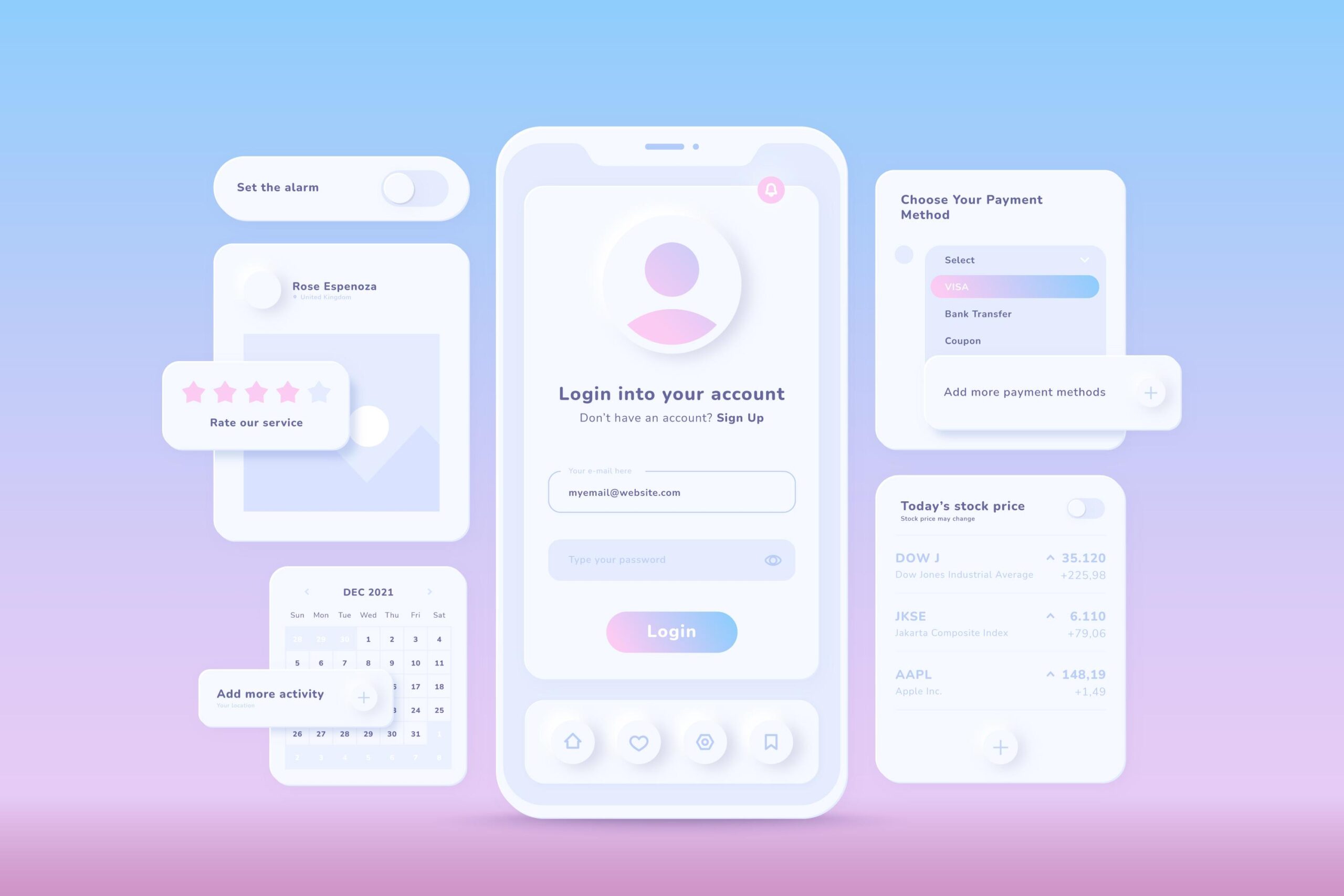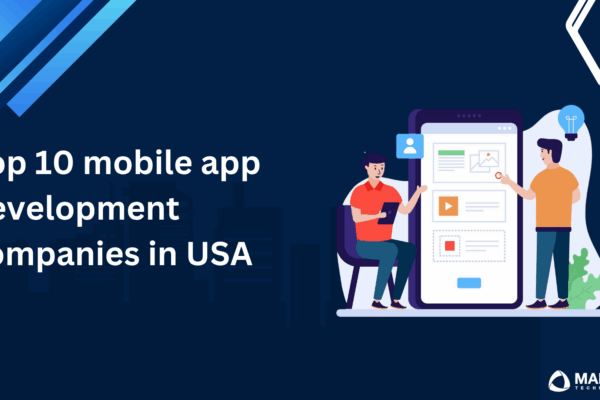When faced with the decision between Objective-C and Swift for your app development, it’s crucial to weigh factors such as community support, tooling, scalability, and finding the right balance between development speed and cost. These considerations play a pivotal role in aligning your application development journey with your business objectives and goals.
With over a decade of experience in the custom software development industry, we at Mallow have honed our skills while working with diverse clients across various domains. Our team, well-versed in both Objective-C and Swift, leverages their experience to address critical factors like community support, tooling, scalability, and cost-effectiveness. While Swift has grown significantly in adoption since its release, Objective-C still retains relevance, particularly in maintaining legacy iOS codebases. As of 2024, Stack Overflow’s Developer Survey shows Swift continues to gain popularity, yet Objective-C remains in use for certain enterprise applications with long-term support requirements.
After reading this article you will acquire valuable insights into what to consider when selecting between Objective-C and Swift for iOS application development. We’ll frame things so it’s easy to understand how these languages align with specific business goals. Empowered with this knowledge, you can confidently navigate the complexities of Objective-C and Swift, ensuring a well-informed and strategic choice for your application development endeavours.
Why it’s so critical to choose the right programming language for iOS development
Choosing the right programming language for iOS development is a pivotal decision that shapes the trajectory of your app’s success. The selection between languages like Objective-C and Swift goes beyond mere syntax preferences; it profoundly influences factors such as performance, user experience, and long-term maintainability. The significance lies in aligning your development approach with the unique needs of your project, ensuring efficient coding, scalability, and future adaptability.
Outcomes of choosing the right programming language
- Selecting the appropriate language can significantly impact the speed and efficiency of your iOS app.
- The right language enhances developers’ efficiency, affecting the speed and quality of app development.
- The programming language influences how seamlessly users interact with your app, impacting overall satisfaction.
- Choosing a language aligned with your project’s scale ensures easier maintenance and future enhancements.
- Different languages may offer varied support and integration capabilities with iOS frameworks and technologies.
- Robust community support ensures access to resources, updates, and solutions to challenges encountered during development. For instance, the Swift Server WorkGroup (SSWG) reported significant ecosystem-wide accomplishments in 2024, emphasizing the language’s active development and community engagement.
Objective-C: features, benefits, and limitations

Objective-C, a stalwart in the iOS development realm, has left an indelible mark with its rich history and extensive use in crafting iconic applications. With a syntax rooted in Smalltalk and C, it offers a unique blend of object-oriented and procedural programming. Its foundational role in Cocoa and Cocoa Touch frameworks is well-documented in Apple’s official documentation on Objective-C, which details core principles such as message sending, dynamic typing, and memory management. Let’s explore the key features and nuances that make Objective-C stand the test of time.
Key features and syntax
- Dynamic Runtime – Enables flexible messaging between objects during runtime.
- Objective-C categories – Facilitates adding methods to existing classes without altering their source code.
- Automatic Reference Counting (ARC) – Simplifies memory management, automatically tracking and managing object references.
- Delegation – Leverages the delegation pattern for effective communication between objects.
- Header (.h) and Implementation (.m) Files – The distinctive separation of interface and implementation details.
Existing codebase and backward compatibility
- Smooth transition – Objective-C allows gradual migration, enabling developers to integrate Swift into existing code.
- Robust backward compatibility – Ensures that code written in Objective-C continues to function seamlessly with newer iOS versions.
| Advantages | Limitations |
| Dynamic runtime enables runtime modifications and introspection. | Syntax can be complex, especially for beginners. |
| Long-standing usage in iOS development, proving stability and reliability. | Relies on manual memory management, prone to memory leaks. |
| Large existing codebases in Objective-C, vast community support. | Learning curve may be steep for developers new to Objective-C. |
| Seamless integration with C and C++ facilitates compatibility. | Lacks modern language features found in newer languages. |
Please note that the advantages and limitations are indicative and may vary based on specific use cases and project requirements.
Swift: features, benefits, and limitations

Swift revolutionised iOS development with its modern approach, combining performance and developer-friendly syntax. Introduced by Apple in 2014, it swiftly gained prominence for its safety, conciseness, and versatility. The language continues to evolve, with Swift 6 introducing features like compile-time data race safety, enhancing code reliability in concurrent programming.
Key Features and Syntax
- Type Safety – Swift emphasises type safety, reducing the likelihood of errors during development.
- Modern Syntax – Offers a clean and expressive syntax, making code more readable and concise.
- Memory Management – Implements automatic memory management, utilising Automatic Reference Counting (ARC).
- Swift Playgrounds – Provides an interactive coding environment for experimentation and learning.
- Existing Codebase – Swift smoothly integrates with Objective-C, allowing the coexistence of both languages in a project.
- Backward Compatibility – Swift maintains backward compatibility, ensuring smooth transitions and updates.
| Advantages | Limitations |
| Strong emphasis on code safety and readability. | Swift is a relatively young language, and its evolution may introduce breaking changes. |
| Swift offers high performance, comparable to Objective-C. | Smaller ecosystem compared to more established languages. |
| Seamless interoperability with Objective-C. | Transitioning from Objective-C to Swift might pose a learning curve for developers. |
| Growing community support and active development. | Some third-party tools may have limited support compared to Objective-C. |
Please note that the advantages and limitations are indicative and may vary based on specific use cases and project requirements.
What factors should you consider when choosing between Objective-C and Swift?
Compatibility with existing projects
The interoperability between Objective-C and Swift facilitates a gradual adoption strategy, allowing developers to introduce Swift components incrementally without necessitating a complete overhaul of the existing codebase.
This compatibility ensures a smooth evolution for projects developed in Objective-C, preserving the value of previous work while harnessing the advantages and modern features that Swift brings to the table. It provides a strategic pathway for development teams to embrace Swift’s benefits without compromising the stability of their existing projects. The coexistence of Objective-C and Swift within the same codebase allows you to leverage the strengths of each language based on their specific needs and preferences.
Community support and future trends
The world of iOS development thrives on community support and future trends. Swift, being a relatively newer language, is gaining substantial momentum with an active and growing community. It’s crucial to factor in community engagement and ongoing language development to ensure that your chosen language aligns with the evolving trends and remains well-supported.
Development speed and ease of learning
Swift’s modern syntax significantly contributes to code readability, accelerating development speed. Its simplicity and conciseness lead to a faster learning curve compared to the sometimes intricate syntax of Objective-C. The streamlined syntax of Swift can enhance productivity, particularly for developers newer to iOS development or those transitioning from other languages.
User interface (UI) development capabilities
The choice between Objective-C and Swift significantly impacts UI development capabilities. Swift emerges as the preferred choice for UI development due to its modern features, improved syntax, and compatibility with Apple’s latest UI frameworks. It offers a more streamlined and expressive approach to building engaging user interfaces, ensuring a more intuitive and efficient development process.
Integration with third-party libraries and tools
The capability of seamless integration with third-party libraries and tools is a crucial factor. While both Objective-C and Swift boast robust support for popular libraries, Swift’s modern features and growing adoption may result in better compatibility with newer tools and libraries. Consider your project’s dependencies and evaluate the language’s support within the broader ecosystem to ensure a cohesive and well-integrated development environment.
Project maintenance-related considerations
When choosing between Objective-C and Swift, project maintenance is a crucial aspect. Objective-C, being a well-established language, may have mature projects with stable maintenance requirements. Swift, on the other hand, offers modern syntax and features, potentially reducing maintenance efforts over time. Consider your project’s long-term maintenance needs and the advantages each language brings in terms of code readability, simplicity, and evolving best practices. As newer technologies and programming languages emerge, the pool of developers proficient in Objective-C may gradually decrease. Swift, being the newer and more modern language, attracts a growing number of developers who are keen to adopt the latest tools and technologies. This could lead to a higher probability of finding skilled Swift developers compared to Objective-C developers in the future.
Multiple platform-related considerations
Evaluate platform considerations, particularly regarding multiple device support. Both Objective-C and Swift cater to iOS and macOS development. However, Swift’s modern features and growing adoption make it a preferred choice for cross-platform development, ensuring compatibility with a broader range of Apple devices. For instance, Swift seamlessly adapts to the nuances of iPadOS, tvOS, and watchOS. It’s not solely about iPhones and Macs; it’s about building applications that harmonise with the distinctive functionalities of iPads, Apple TVs, and Apple Watches. Swift’s modern features and growing adoption make it a preferred choice for cross-platform development.
Ecosystem changes and updates
Examine how each language adapts to ecosystem changes and updates. Swift, with its active development community, tends to receive regular updates and improvements. Consider how well each language aligns with your project’s need for staying current with the latest technologies and industry best practices.
Benchmarking for performance-related metrics
Performance is a critical consideration. Benchmarking for memory usage and concurrency can provide insights into how each language performs in specific scenarios. Objective-C, being a mature language, may have established benchmarks, while Swift’s modern features could lead to more efficient memory management and concurrent processing.
Handling scalability, security, and other features

Consider scalability and security aspects when choosing a language. Both Objective-C and Swift can handle scalable applications, but Swift’s modern features may enhance code maintainability, leading to more scalable solutions. Assess security features and practices in both languages to ensure compliance with industry standards and secure coding practices.
Apple’s support for the language
Evaluate Apple’s support for each language. Both Objective-C and Swift enjoy support from Apple, but Swift is increasingly becoming the language of choice for Apple’s latest frameworks and technologies. Consider the alignment of each language with Apple’s strategic direction and long-term support.
Development speed & cost
Factor in development speed and cost considerations. Swift’s modern syntax and concise code may lead to faster development, potentially reducing costs. However, the familiarity of your team with Objective-C and existing codebases may impact development speed. Assess how each language aligns with your project’s timelines and budget constraints.
Objective C Vs Swift which could be the suitable one for you?
When deciding between Objective-C and Swift, choose Objective-C for existing projects with a significant codebase, stable maintenance needs, or dependencies on older libraries. It’s ideal for legacy applications and teams already experienced with it. However, businesses should also consider migrating from Objective-C to Swift to take advantage of modern features, better performance, and the latest Apple frameworks. Swift is best for new projects, modernization efforts, or leveraging Apple product’s development capabilities, with its modern syntax, active community, and frequent updates enabling faster development and cutting-edge functionality.
How much does it cost to build an iOS application?
Having explored the differences between Objective-C and Swift, you might be curious about the financial aspects of iOS app development. Understanding the costs involved and the factors influencing them is crucial for planning and budgeting your project effectively. Factors such as app complexity, desired features, design requirements, and development timeframes can significantly impact the overall cost. Whether you’re a business owner looking to invest in a mobile app or a developer estimating project expenses, knowing these factors is essential. For more insights on how much it costs to develop an iOS application and the factors that drive costs up or down, check out this article on the topic.
If you need further clarification on how we could help you out with your requirement, then talk to one of our experts.
Your queries, our answers
What is mobile application development?
Mobile application development involves creating software applications designed to run on mobile devices like smartphones and tablets. These apps can be native (built specifically for iOS or Android), cross-platform (designed to work on multiple platforms), or hybrid (combining elements of both).
What are the stages of mobile app development at Mallow?
Our mobile app development process includes the following stages: requirement gathering and analysis, design and prototyping, development and coding, testing and quality assurance, deployment, and post-launch support. Each stage is crucial to delivering a high-quality application.
To gain deeper insights into the experience of working on a mobile project with Mallow, explore more details here.
Should I develop a native or cross-platform app?
The choice between native and cross-platform development depends on your project’s goals, budget, and target audience. Native apps offer better performance and a more tailored user experience, while cross-platform apps allow for faster development and lower costs by using a single codebase for multiple platforms. For a detailed comparison of Native vs. Hybrid development, explore our comprehensive analysis to help you make an informed choice.
What platforms does Mallow develop mobile apps for?
Mallow develops mobile apps for iOS, Android, and cross-platform solutions. We use the latest technologies and frameworks to ensure your app performs optimally on the platforms that matter most to your users.
How do I choose the right features for my mobile app?
Choosing the right features for your mobile app depends on understanding your target audience, business goals, and budget. We work closely with you to prioritize features that will provide the most value to your users and align with your business objectives.
How does Mallow handle app updates and maintenance?
At Mallow, we offer ongoing app maintenance and updates as part of our post-launch services. This includes regular updates to improve performance, add new features, and ensure compatibility with the latest operating systems. For more details, get in touch with our team.
Can Mallow help with app store submissions?
Yes, Mallow assists with the entire app store submission process, including meeting the guidelines for Apple’s App Store and Google Play. We ensure your app is ready for submission and provide support to help it get approved.
What technologies does Mallow use for mobile app development?
Mallow uses a variety of technologies and frameworks for mobile app development, including Swift and Objective-C for iOS, Kotlin and Java for Android, and React Native and Flutter for cross-platform development. Our technology choices are driven by the specific needs of your project.
How do you test mobile apps before launch?
Our testing process includes functional testing, performance testing, security testing, usability testing, and compatibility testing across different devices and operating systems. We ensure your app is bug-free and performs optimally before it goes live.
How much does it cost to develop a mobile app?
The cost of developing a mobile app depends on several factors, including the app’s complexity, features, platform (iOS, Android, or both), and the development team’s expertise. Costs can range from $10,000 to $150,000 or more. To know more, check out how much it costs to work on a mobile project with us.
How long does it take to develop a mobile app?
The development timeline for a mobile app varies depending on the complexity of the project. A basic app may take 2-4 months to develop, while a more complex app with advanced features can take 6-12 months or longer.
How do I choose the right features for my mobile app?
Choosing the right features for your mobile app depends on understanding your target audience, business goals, and budget. We work closely with you to prioritize features that will provide the most value to your users and align with your business objectives.
Will Mallow provide post-launch support for my mobile app?
Yes, Mallow offers comprehensive post-launch support, including monitoring, updates, bug fixes, and enhancements. We ensure your app remains up-to-date and continues to perform well after it’s launched.
What are the benefits of having a mobile app for my business?
A mobile app can enhance customer engagement, increase brand visibility, provide better service through personalized experiences, and create new revenue streams. It also allows you to reach a broader audience by making your services more accessible on mobile devices.
How do I get started with mobile app development at Mallow?
Getting started with Mallow is easy! Simply reach out to us to discuss your project. We’ll work with you to understand your goals, define your requirements, and create a development plan that meets your needs. Let’s bring your mobile app idea to life!.
How do you ensure the security of the mobile apps you develop?
Security is a top priority at Mallow. We implement advanced security measures, including encryption, secure authentication, and regular security audits, to protect your app from potential threats and ensure data integrity.
To learn more about how we handle and implement these security measures, check out more details here.



